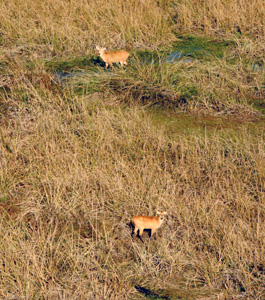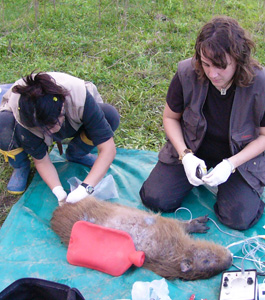Ecological Monitoring
The Conservation Land Trust (CLT) looks to carry out and promote studies that help us understand the functionality of Iberá’s ecosystems—lagoons, swamps, glens, malezal grasslands, espinal, etc.—with emphasis on how these ecosystems respond to anthropic and natural disturbances. Because of this, we are especially interested in identifying the response of fauna populations to the presence or absence of some form of hunting control. Equally important is understanding how the presence and abundance of cattle, the slashing and burning of grasslands, and the presence and abundance of different exotic species (e.g. common pigs, axis deer, pine trees) affect the natural ecosystems. Just as important, we consider it fundamental to evaluate the effects of reintroducing extinct species have on the ecosystem and how this reintroduction will affect the pre-existing state of the wildlife that live within the reserve.

Aerial census of marsh deer |
|

Evaluation |
Because we think that one of the best ways to assure the conservation of a protected area is through the establishment of research teams that combine scientific excellence with a long-term commitment to research, the majority of our studies are carried out in collaboration with very prestigous national researchers.
In order to respond to the essential questions, CLT is promoting the execution of four lines of ecological monitoring: a) periodic aerial censuses of fauna in the greater basin region of Iberá, b) the evaluation of the effect of cattle on the biodiversity of Iberá’s grasslands, c) long term tracking of bird and mammal communities in CLT owned parks, and d) the evaluation of the pre-existing status of wildlife populations that inhabit the reserve.